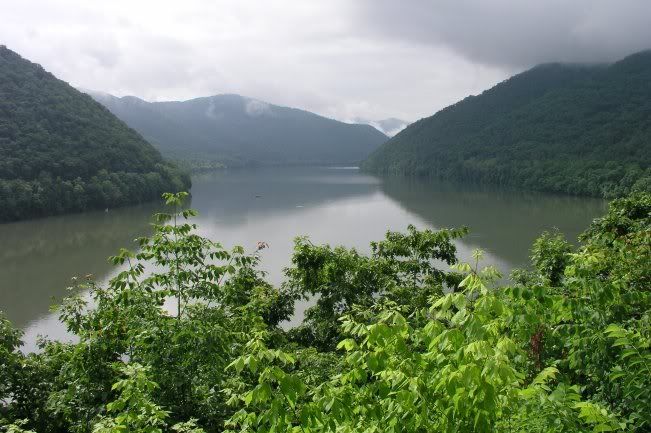Well, the 2016 High Speed Rail unlock has been postponed to 2018 or 2020. When transportation policy at the Federal level is grabbed with both hands by the Oil and Gas death lobby, we have to turn to the state level. Now, in Ohio, it might not look like that offers a prospect any better …
Tag: Rapid Passenger Rail
Mar 31 2015
Sunday Train: The Hole in the PA Keystone West Feasibility Study
 One of the things I was waiting on last year was delivery of Pennsylvania’s feasibility study for improvements on the “Keystone West” corridor. The “Keystone East” corridor connecting Harrisburg and Philadelphia was upgraded in 2006, with an electrified corridor with speeds of up to 110mph providing travel times competitive with driving, especially in the suburban Philadelphia area. So when a “Keystone West” feasibility study was announced, there were high hopes in some quarters that some substantial improvements might be made on the “Keystone West” corridor, connecting Pittsburgh with Harrisburg, currently hosting only the Pennsylvanian between Pittsburgh and Philadelphia.
One of the things I was waiting on last year was delivery of Pennsylvania’s feasibility study for improvements on the “Keystone West” corridor. The “Keystone East” corridor connecting Harrisburg and Philadelphia was upgraded in 2006, with an electrified corridor with speeds of up to 110mph providing travel times competitive with driving, especially in the suburban Philadelphia area. So when a “Keystone West” feasibility study was announced, there were high hopes in some quarters that some substantial improvements might be made on the “Keystone West” corridor, connecting Pittsburgh with Harrisburg, currently hosting only the Pennsylvanian between Pittsburgh and Philadelphia.
The feasibility study is was originally promised for substantially earlier, with a final draft completed in May 2013 but the trip from final draft to final report took more than a year, being finally published in August of last year (pdf).
A quick review of the Executive Summary reveals that a range of things can be done to improve the Keystone West, which could trim something less than an hour from the current five and a half hour trip to Harrisburg (with a further hour and a half to Philadelphia). It also takes a look at, and quickly dismisses an Express HSR corridor.
But for some reason … while it considers an option to add a third passenger-only track on the Keystone West, it completely ignores the option of a Rapid Rail speed upgrade on that track … despite the fact that a Rapid Rail speed upgrade was part of what made the Keystone East project successful. So I’ll take a look at this curious hole in the feasibility study, below the fold.
Mar 16 2015
Sunday Train: Five Levels of US Intercity Rail Policy
 In Sunday Train last week, I referred to the Bipartisan Majority to Authorize the funding of Amtrak as “Good News”. One commentator in the discussion in one of the crossposts pointed out that the news wasn’t all that particularly good, since continued funding on this basis over the indefinite future will spell serious trouble for the system as a whole.
In Sunday Train last week, I referred to the Bipartisan Majority to Authorize the funding of Amtrak as “Good News”. One commentator in the discussion in one of the crossposts pointed out that the news wasn’t all that particularly good, since continued funding on this basis over the indefinite future will spell serious trouble for the system as a whole.
Now, as I suggested more than once, the “good news” last week certainly was not unqualified good news … that is, to say it was “qualified” good news was already taking on board the bad electoral news for Amtrak in the continued Republican House Majority combined with a new Republican Senate Majority, which opened the door to some of the deep, slashing cuts to Amtrak that some on the Republican side have long hoped to make. So the “qualified good news” was that in going for a total defunding of Amtrak, the radical reactionary wing of the Republican party overplayed its hand, opening the way for a majority of House Republicans, along with basically the entire Democratic caucus, to authorize the continued funding of Amtrak at just about the levels that have been in place over the past four years.
But that was set against the bad news of the INDOT refusing to continue the Hoosier State service on the ground of basically not being allowed to have its cake and eat it too … insisting on acting like the organization putting together a passenger rail service, without being treated as a passenger railway. And so I started thinking about the Hoosier State / Cardinal corridor in the context of, on one hand, the very low bar for “good news” in transport funding with this Congress, versus the tremendous need we have for a massive wave of investment in transport that can be powered by sustainable, renewable energy. And to organize my thinking, I started to sort it out into five levels:
- Level 0: “Very Much Worse”;
- Level 1: “Barely Scraping By”;
- Level 2: “A Basic Skeleton Service Done Right”
- Level 3: “Incremental Growth”
- Level 4: “Aggressive Growth”
More about the five levels … below the fold.

Recent Comments